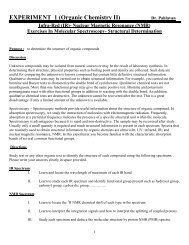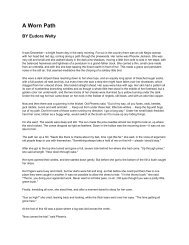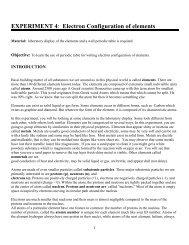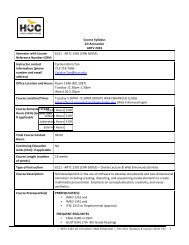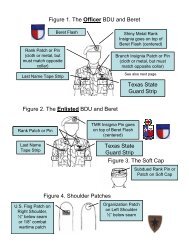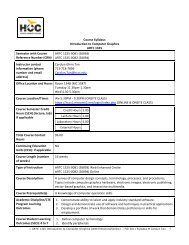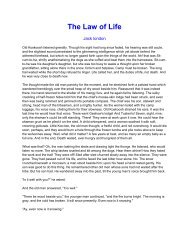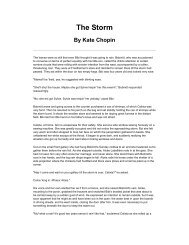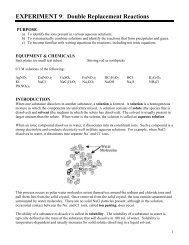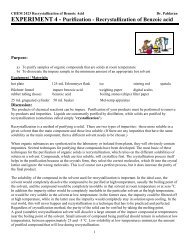EXPERIMENT 6 - Extraction
EXPERIMENT 6 - Extraction
EXPERIMENT 6 - Extraction
- No tags were found...
You also want an ePaper? Increase the reach of your titles
YUMPU automatically turns print PDFs into web optimized ePapers that Google loves.
CHEM 2423 <strong>Extraction</strong> of Benzoic AcidDr. PahlavanSecond <strong>Extraction</strong>1.95 = 205.0 X X = 0.00951X w(2) = (100.0) X = (100.0)(0.00951) = 0.951 gX o(2) = (105.0) X = (105.0)(0.00951) = 0.999 g(remained in water after second extraction)(extracted by diethyl ether after second extraction)%E = [( X o(1) + X o(2) )/ X total ) x100 = [(2.05 + 0.95)/ 4.0) x100 = 76 %<strong>Extraction</strong> solventsIf a solvent is to be used to extract an organic compound from aqueous mixture or solution, it must be virtuallyinsoluble in water, and it should have a low boiling point so that the solvent can be more soluble in theextraction solvent than in water, since otherwise too many extraction steps will be required to remove all of thesolute.Ethyl ether is the most common extraction solvent. It has a very low boiling point ( 34.5 ° c) and can dissolve alarge number of organic compounds, both polar and nonpolar. However, ethyl ether must be used with greatcare, since it is extremely flammable and tends to form explosive peroxides on standings.Methylene Chloride (dichloromethane) has most of the advantage of ethyl ether; in addition, it is nonflammableand denser than water. However, it has a tendency to form emulsions, which can make it difficult to separate thelayers cleanly. Other useful solvents and their properties are listed in the following table. Various grades ofpetroleum ether (a mixture of low boiling hydrocarbons) can be used in place of pentane.From the foregoing discussions some of the desirable properties of an organic extraction solvent becomeapparent. (1) It must readily dissolve the substance being extracted but must not dissolve to any appreciableextent in the solvent from which desired substance is being extracted. (2) It should extract neither the impuritiesnor other substances present in the original mixture. (3) It should not react with the substance being extracted.(4) It should be readily separated from the desired solute after extraction. Few solvents will meet all of thesecriteria, and in some cases a completely satisfactory solvent cannot be found. Therefore, the scientist mustselect a solvent system that most nearly approaches the ideal.Some of the solvents commonly used for extracting aqueous solutions or mixtures include diethyl ether,methylene chloride, chloroform, carbon tetrachloride, benzene, n-pentane, n-hexane, and various mixtures ofsaturated hydrocarbons from petroleum (petroleum ether, ligroin, etc.). Each of these has a relatively lowboiling point so that it may be fairly easily separated from the solute by evaporation or distillation. Methanoland ethanol are not good solvents for extracting aqueous solutions or mixtures because of their solubility inwater; however, if an aqueous solution can be saturated with potassium carbonate without affecting the solute,ethanol can be used to extract polar solutes from the solution.4



